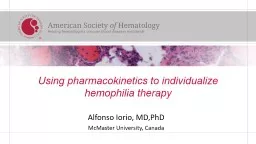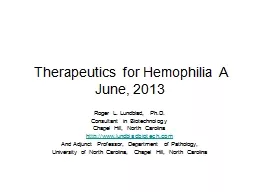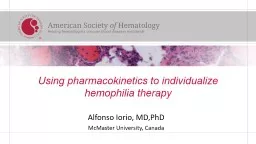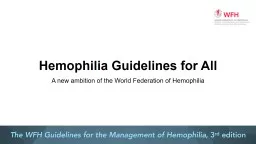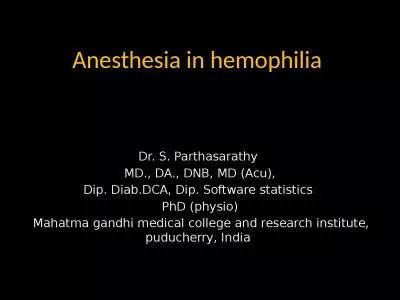PPT-Using pharmacokinetics to individualize hemophilia therapy
Author : olivia-moreira | Published Date : 2018-09-30
Alfonso Iorio MDPhD McMaster University Canada Disclosures McMaster University has received research consultancy and educational funding for Population PK projects
Presentation Embed Code
Download Presentation
Download Presentation The PPT/PDF document "Using pharmacokinetics to individualize ..." is the property of its rightful owner. Permission is granted to download and print the materials on this website for personal, non-commercial use only, and to display it on your personal computer provided you do not modify the materials and that you retain all copyright notices contained in the materials. By downloading content from our website, you accept the terms of this agreement.
Using pharmacokinetics to individualize hemophilia therapy: Transcript
Download Rules Of Document
"Using pharmacokinetics to individualize hemophilia therapy"The content belongs to its owner. You may download and print it for personal use, without modification, and keep all copyright notices. By downloading, you agree to these terms.
Related Documents

